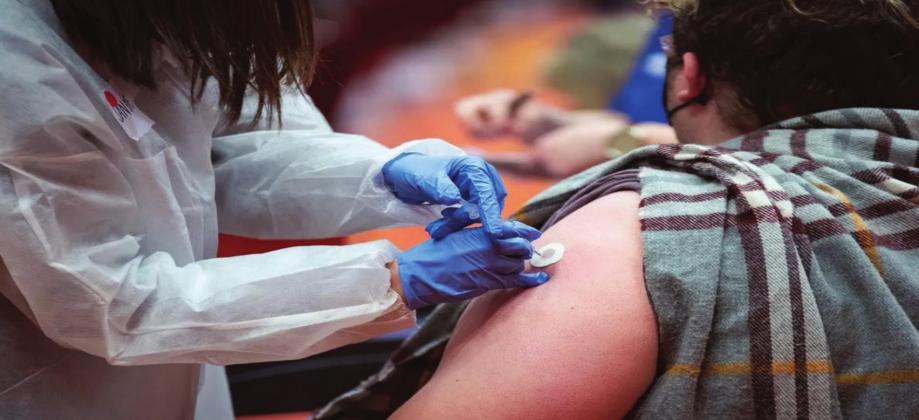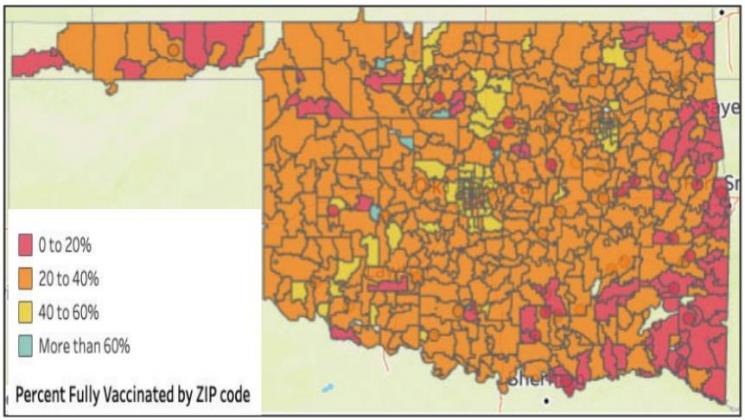COVID-19 vaccinations are accelerating in Oklahoma as the state sees a rapid rise in cases from the delta variant and students return to school and colleges.
More than 71,000 doses were given last week, up more than 40% from a month ago, according to data from the Oklahoma State Department of Health. The state ranked ninth in the nation for doses given by population.
The recent increase in vaccinations is a rare bright spot as COVID-19 hospitalizations have strained the state’s health care system. Still, Oklahoma remains behind all but nine other states when it comes to vaccination rates, with 43% of the state’s population fully vaccinated.
Public health officials hope final approval of the two-dose Pfizer vaccine by the U.S. Food and Drug Administration will spur some vaccine hesitant residents to finally get the vaccine.
Oklahoma ranks 12th worst with more than 57% of the state unvaccinated. Here’s how doctors are responding.
More than 142,000 Oklahomans are two or more weeks late in getting their second dose of either the Pfizer or Moderna vaccines, the health department said Friday. That’s almost 9% of the 1.65 million people who had a first dose of those vaccines. (About 110,000 Oklahomans have taken the one-dose Johnson & Johnson vaccine.)
A closer look at vaccination rates by ZIP code shows suburban Oklahoma City and Tulsa with the highest vaccination rates, followed by several rural ZIP codes in the north central and southwestern parts of the state. Places in the state’s eastern and southeastern regions had the lowest vaccination rates, according to an analysis of health department vaccination data by Oklahoma Watch. Just 98 of the 623 ZIP
Just 98 of the 623 ZIP codes with vaccination data had rates higher than the state’s average vaccination rate. That’s up from a month ago, when 73 ZIP codes were higher.
The state provides the COVID-19 vaccination data by ZIP code on a biweekly basis, but it doesn’t include doses administered by federal entities or tribal nations. That means rates may appear lower than they are in areas with higher proportions of Native American residents or military installations.
August is set to be the fourth-highest month for new cases. Almost 60,000 new cases were reported so far this month, more than all the cases recorded from March to July combined.
The state’s 7-day rolling average of new cases rose on Friday to 2,577, its highest level since January. The 3-day average of COVID-19 hospitalizations was down slightly to 1,602, but daily hospitalizations have almost tripled in the past month.
Paul Monies has been a reporter with Oklahoma Watch since 2017. He covers state agencies and public health. Call or text him at (571) 319-3289 or email pmonies@oklahomawatch.org. Follow him on Twitter at @pmonies.
Oklahoma Watch, at oklahomawatch.org, is a nonprofit, nonpartisan news organization that covers public-policy issues facing the state.


